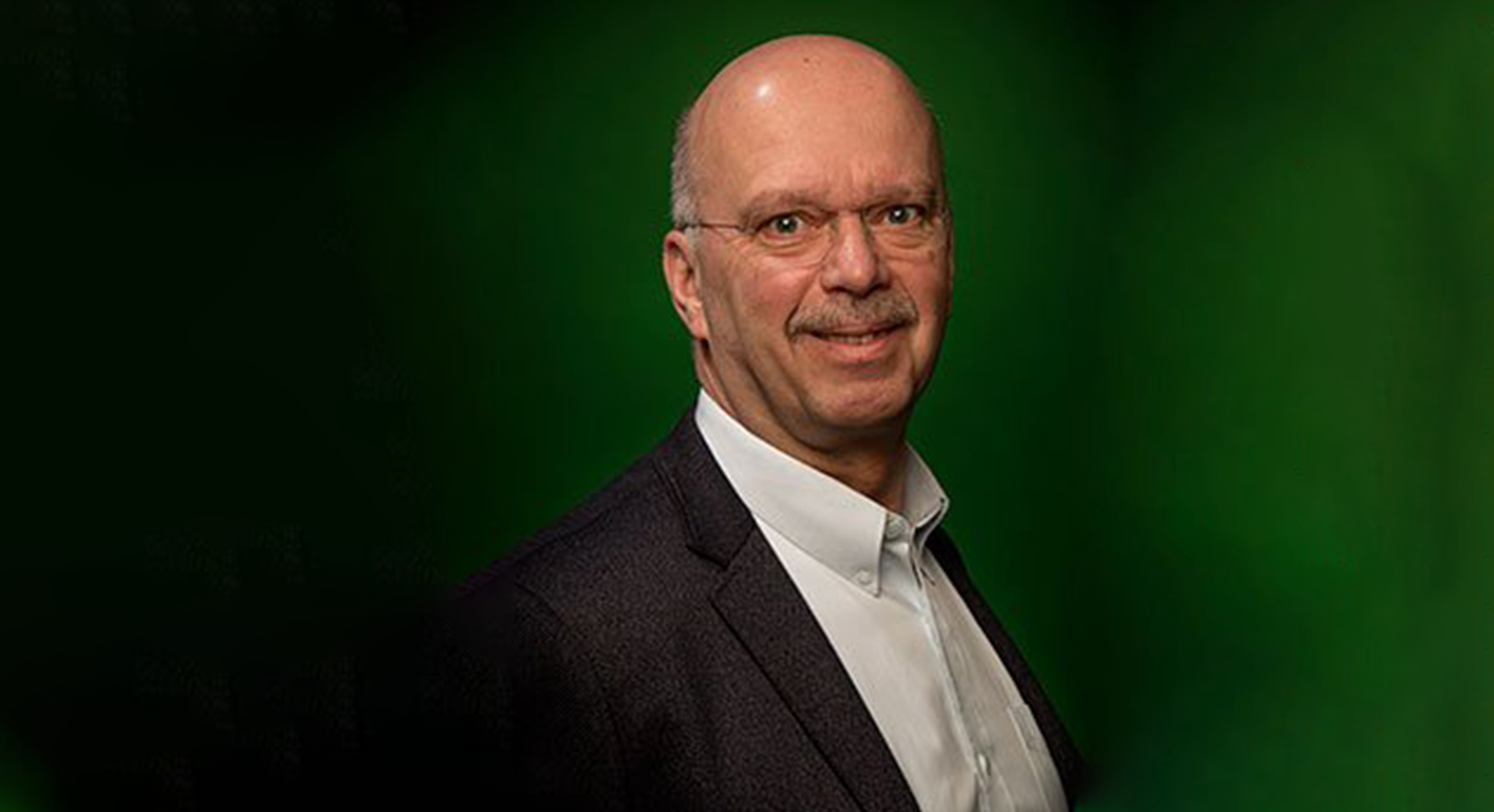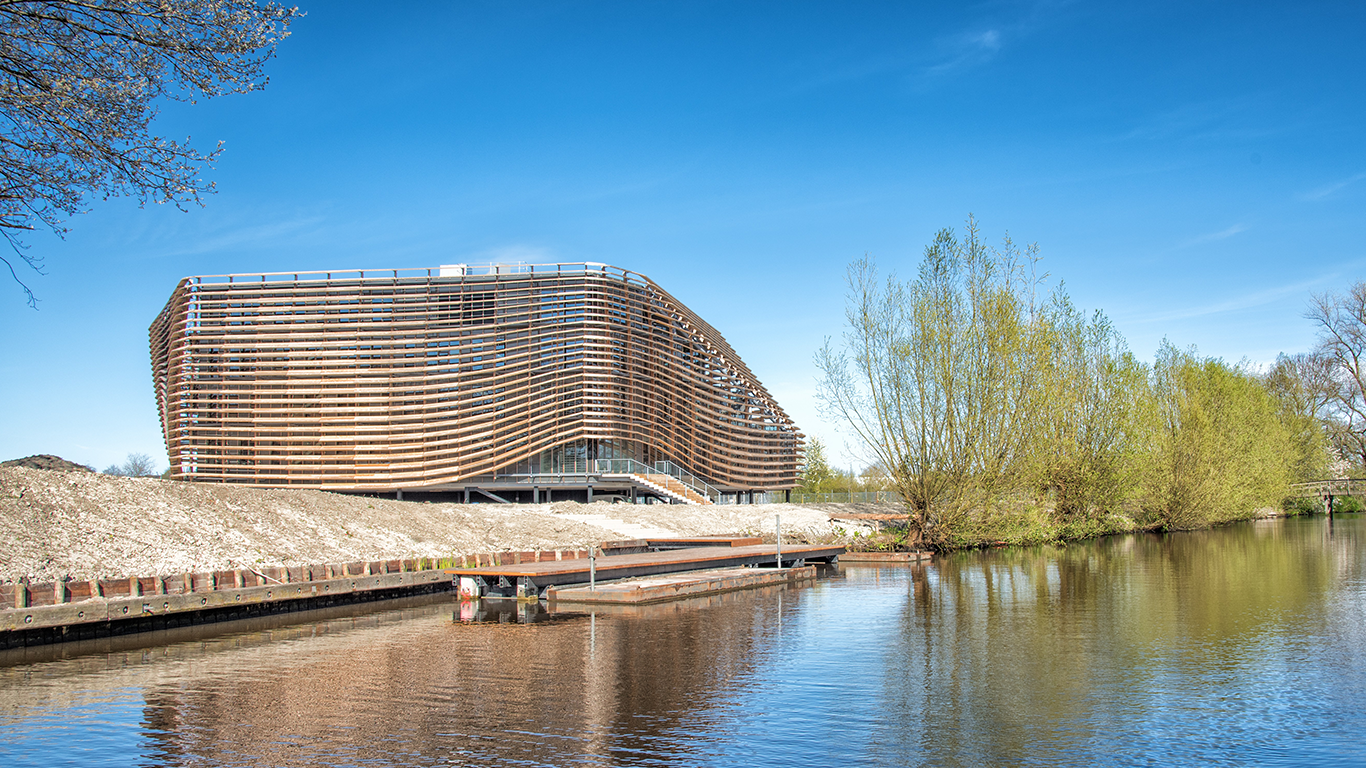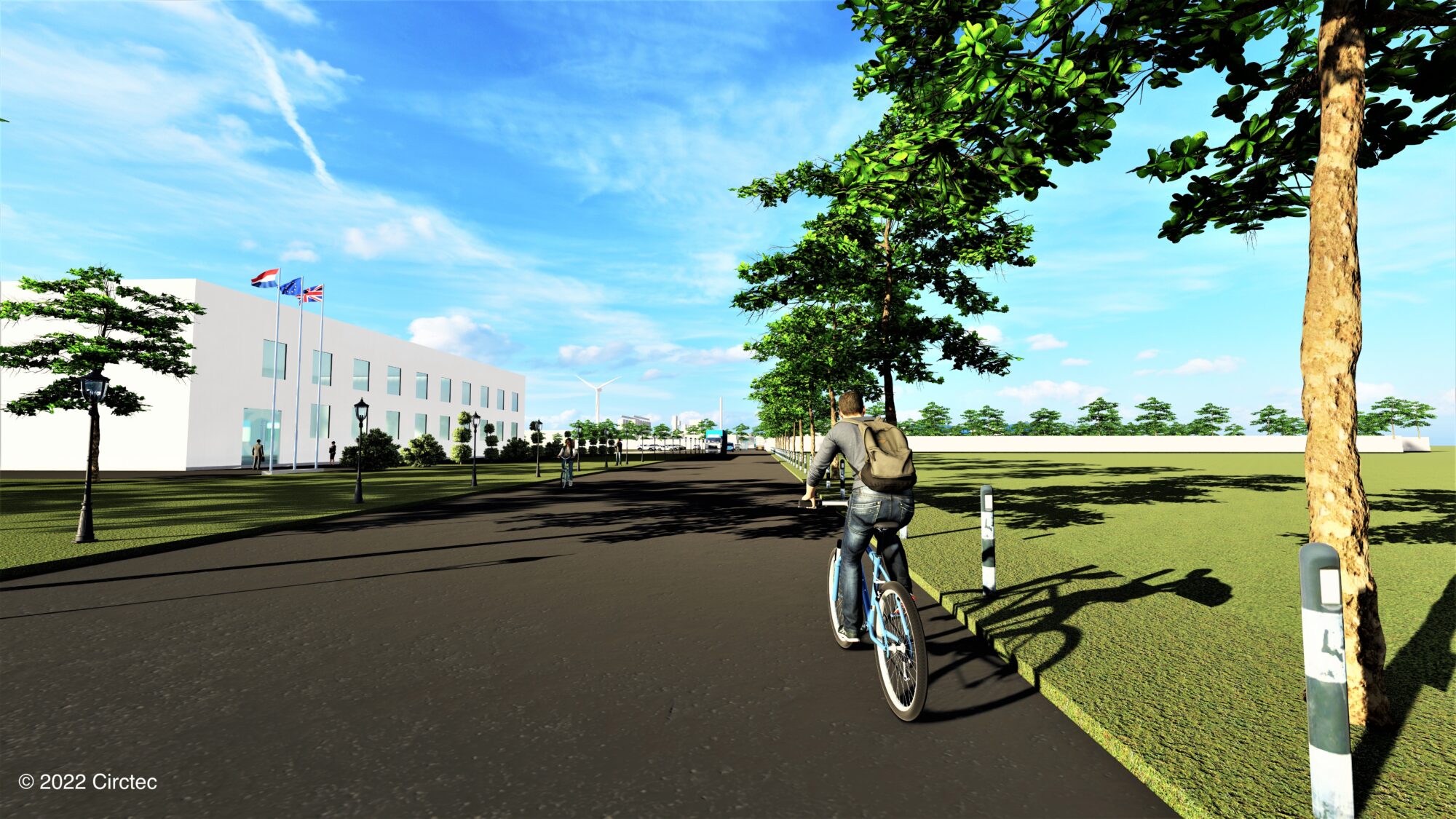From unproven concept to automated factory in Heerenveen: REDstack’s road to world-class membrane stacks
What began as a theory in 2004 has now blossomed into a fully-fledged company with plans to complete construction of a new automated factory in the TopDutch region by the end of 2025. REDstack have spent two decades researching, developing and growing in the WaterTech hub of the Northern Netherlands.

What started as a spin-off from Wetsus, the European knowledge center for sustainable water technology based in Leeuwarden, almost 20 years ago has now developed into REDstack, a company that produces what it says are the world’s best ElectroMembrane stacks, with the highest energy and chemistry efficiency. Its founder Pieter Hack sat down for an interview to describe the company’s journey over the years.
“We thought it was a brilliant concept from the first day,” said Hack, referring to a model calculation they had done back in 2004. Researchers at Wetsus had been working on the theme of so-called ‘Blue Energy’, aiming to generate energy from fresh and salt water. Originally, Hack’s plans were to develop this ‘Blue Energy’ technology, and bring it to the market.
The technology the spun-off REDstack were working on was based on the principle of harnessing the contact between fresh and saltwater at locations such as the Netherlands’ Afsluitdijk - a 32 km long dike between North Holland and Friesland - to harvest power. Their calculations predicted that 200 Megawatts of sustainable power could be harvested at that location.

As Hack explained, they believed the concept could work but more research was required to prove it. It took several PhD students until 2011 to finally show that the technology worked in the laboratory and then it was time to plan a pilot phase in the real world. This latter phase continued until 2021.
The technology was based on reversing the process that a typical desalination plant would follow using electrodialysis. Usually, such plants use energy to take saltwater and split it into double-salted water, referred to as brine, and fresh water.
“This was technology that had existed for 45 years,” Hack said. His team then used the same equipment but in reverse mode. By putting the fresh and saltwater through the equipment, the water mixed together and generated energy as it did so.
Have you heard of Murphy’s law?
“Maybe you’ve heard of Murphy’s law, that when something can go wrong it will go wrong,” Hack said. Over the years they faced all kinds of hurdles from icing, algae, varying salt concentrations and other fluctuations. “Everything that could go wrong did go wrong, but we survived,” Hack explained.
The potential use case of their findings was the creation of a 200 MegaWatt power station. But this would have cost €2 billion which was a project that their small company couldn’t take on alone. Furthermore, initial positive signals from the Energy Ministry and power companies faded so politics also had a role in declining support for their plans. Ultimately, the project fell through.
However, today not all hope is lost. Hack suspects that the project could still be implemented overseas, perhaps in India, China, or Spain, which could then bring the benefit of helping them gain more experience in this sector. If it all works out, the project could potentially be implemented in the Netherlands.

Back to basics
Nevertheless, back then Hack did not give up. Upon receiving this news, Hack acted to pivot their focus in order to continue gaining experience while generating revenue on the short term. So they reversed their process once more, bringing it back to its original desalination use. Luckily it turned out that the membrane stack they were using to generate energy was much more efficient than other ones that were on the market, so the foundations for the pivot were solid.
“And then the question comes: Do I follow this spin off activity or do I continue my focus on the holy grail that is the power supply?” Hack said. They decided to focus on the spin-off activity, and while doing that they found their membrane stack was also suitable for various different applications that they had never even considered before. This included the recovery of ammonia from waste flows, a discovery that led to the creation of two pilot plants. Hack expects the first commercial revenue from this pipeline to be generated by the end of 2025.
The second application is the use of the same membrane stack to capture carbon dioxide. This application came to a complete surprise to Hack since he didn’t expect a water technology company to be able to introduce an innovative solution that could contribute to the circular economy through a gas.
I dare say we have the world’s best Electron Membrane stack
Pieter Hack, Founder of REDstack
The technology works by passing air, which contains carbon dioxide, through a special shower. The liquid used contains chemicals that absorb this greenhouse gas. The pure carbon dioxide can then be sold off as it has different uses – include using it as an industrial gas or to make carbonated beverages.
REDstack already fulfilled nine orders for membrane stacks to capture carbon dioxide. Other variations of the membrane technology are also being implemented elsewhere.
Hack says all this was made possible thanks to the earlier work done in the area of Blue Energy. “Now I dare say we have the world’s best Electron Membrane stack,” Hack said. He explained that they recently bought similar stacks from competitors in France, the US, and China and put them to the test against their own products. “It turned out that our membrane stack is 30% to 70% more efficient,” Hack said.
A ‘let’s do it’ business culture
Asked about his background, Hack explained that he graduated around 40 years ago from Wageningen University but landed his first job in the TopDutch region in Friesland, at a company called Paques that is still in operation today. “So I lived in Friesland for 14 years. My kids were born in Sneek and we also lived in Balk, so I’m very used to the business climate there,” Hack said.
He describes this business climate as being straightforward. When someone gives you their word they mean it and they don’t make up fanciful stories as they might do in the Randstad, Hack said. “It’s to the point and ‘let’s do it’ rather than just creating a fancy story while doing nothing concrete,” Hack said.
Hack praised the efforts made by Wetsus and its stakeholders since it led to lots of technological development and an improvement in the education sector on WaterTech topics.

Today Hack lives in the south and drives up to Friesland once a week. “I normally drive up and back down in one day. I get in the car early and I’ll be home after dinner. But in comparison, an American is used to driving two hours to get to a meeting. So we shouldn’t complain about the distances here,” Hack said.
The space and skills to grow
Recently REDstack relocated from its offices in Sneek to bigger premises in Heerenveen where they will have their offices, engineering and manufacturing sections all in the same building. They received a significant subsidy from the Province of Friesland to help with their investment in upgrading the stack manufacturing. With their current setup, they can manufacture one membrane stack a week. However, talks are ongoing with their shareholders to expand their production line to handle 10 stacks per week.
Asked about whether REDstack finds enough skilled workers, Hack said that so far they’ve mainly been recruiting people who have followed master’s or PhD programs at Wetsus or at one of Groningen’s universities. He anticipates that in the future they will need more people graduating at a bachelor’s level or from vocational studies to fill engineer, construction, and software engineering roles. Hack suspects that since they are a company that contributes to sustainability, that helps them attract candidates.
It takes a lot of guts and drive if you're aiming to be the front runner
Pieter Hack, Founder of REDstack
Hack attributes his success to his personal drive. At REDstack he was convinced from a technical point of view that the technology would work which he then paired with this drive and a motivation to develop sustainable technology to do his part to help the world.
“It takes a lot of guts and drive to develop something. Certainly when you’re going for a worldwide scale aiming to be the most innovative and a front runner. And then you need a team and partners from different fields as you cannot do it alone,” Hack said. “I hope that once we open our automated manufacturing line in Heerenveen by the end of 2025 everyone involved will be proud of this achievement,” Hack said.
Call me back
Please feel free to fill out the “Call Me Back” form below, and we’ll be delighted to get in touch with you at your convenience.

